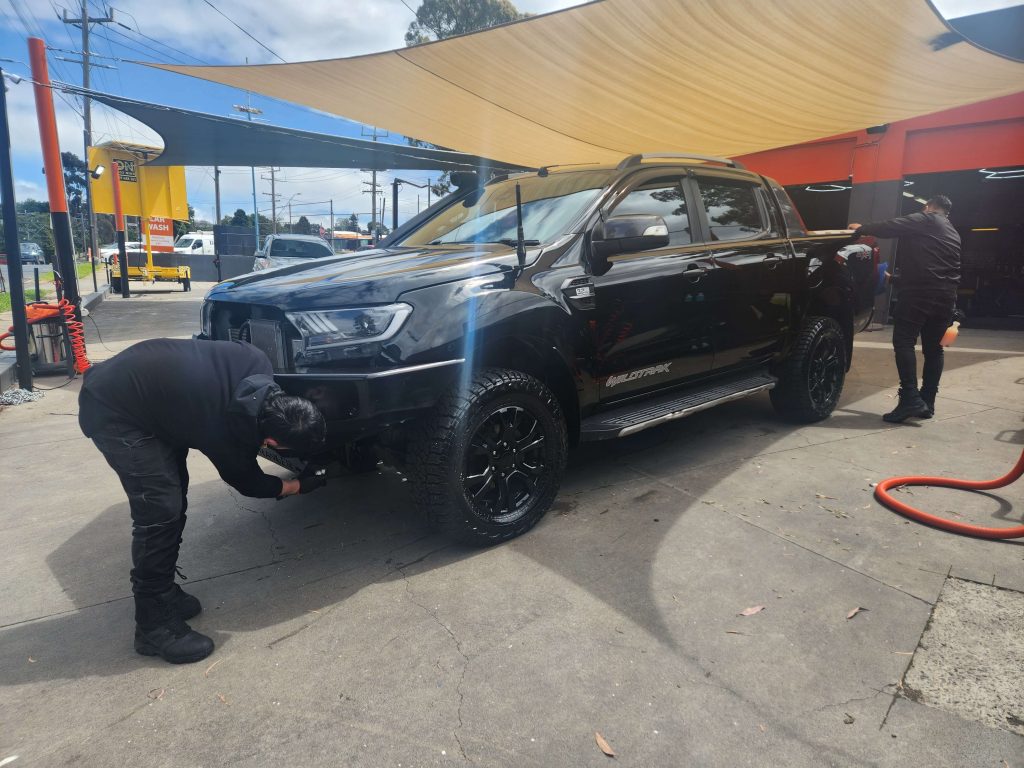Ceramic coating and paint protection methods are different in terms of application, durability, effectiveness, and cost.
Comparison between ceramic coating and other paint protection methods:
You’ve driven your dream car off the lot, revelling in its sleek lines and excellent paint process. It glints under the daylight, turning heads as you cruise down the street. But, as weeks pass by, you begin noticing diffused signs and symptoms of wear and tear. The once-glistening surface seems duller, marred with the aid of tiny scratches and swirl marks. What passed off to that showroom shine?
New motors are often subjected to diverse environmental factors that can quickly diminish their appearance. Dust, pollen, bird droppings, UV rays, or even incorrect washing strategies can all contribute to the untimely fading of car paint. To preserve that pristine appearance and guard your investment, it’s essential to remember powerful paint protection strategies right from the start.
Understanding the Causes of Paint Fading
Environmental elements:
- UV rays: continuous publicity to daylight can oxidize the paint and cause it to vanish or lose its gloss.
- Pollutants and contaminants, such as dust, business fallout, chook droppings, and tree sap, can etch into the paint and cause harm over time.
- Climate elements: rain, snow, and hail can depart mineral deposits on the floor, similarly deteriorating the paint.
Mechanical damage:
- Scratches and swirl marks: flawed washing strategies, abrasive cleansing materials, and incidental touch can create nice scratches and swirl marks on the paint.
- Rock chips and street debris: highways and urban roads can kick up particles that chip away at the paint’s protective layer.
The Role of Ceramic Coating
Inside the struggle in opposition to paint fading, ceramic coating Melbourne emerges as an impressive best friend. Not like traditional wax or sealants, ceramic paint safety paperwork is a strong shielding layer in your car’s paint that bonds chemically with the floor. This nano-ceramic era offers several benefits:
- Improved sturdiness: Ceramic coatings are distinctly resistant to UV rays, chemical compounds, and contaminants, ensuring long-lasting safety.
- Hydrophobic residences: water and dust slide off without difficulty, decreasing the hazard of water spots and making cleansing easy.
- Scratch resistance: whilst not impervious to scratches, ceramic coatings can resist light scratches higher than untreated paint.
- UV safety: shields the paint from UV harm, preventing oxidation and colour fading.
- Stronger gloss: continues the car’s smooth end, giving it a deeper, more colourful appearance.
Why ceramic coating is well worth it
Making an investment in ceramic coating for your new vehicle isn’t always just about aesthetics; it’s about preserving its cost and decreasing long-term renovation expenses. Right here’s why it’s worth thinking about:
- Long-term safety: Ceramic coatings usually last 2-5 years, depending on the quality and upkeep. This sturdy manner has fewer reapplications than wax or sealants.
- Ease of upkeep: Ceramic-coated automobiles are simpler to clean and maintain due to their hydrophobic properties. Water and contaminants bead up and slide off easily, decreasing the risk of scratches throughout cleansing.
- More suitable resale value: A nicely maintained, ceramic paint protection automobile keeps its shine and appears newer for longer. When it comes time to sell or change capacity, customers will admire the nicely preserved outdoors.
- Cost-effectiveness: Ceramic coating can also have a better preliminary cost than traditional techniques like waxing. The reduced frequency of reapplication and the ability to save on detailing fees ultimately make it cost-effective.
Application Process
Making use of ceramic coating is a meticulous process that is handled by specialists in a pleasant way. Right here’s what normally takes place during the utility:
- Surface education: The car undergoes a radical cleaning and decontamination method to remove any present wax, dirt, and residue.
- Utility: the ceramic coating is carefully applied to at least one panel at a time, ensuring even coverage and bonding with the paint surface.
- Curing: After the software, the coating needs time to be treated and bonded with the paint. Depending on the unique product used, this process can take numerous hours to an afternoon.
Maintaining Your Ceramic Coating
Whilst ceramic paint protection gives robust protection, proper renovation is fundamental to maximizing its benefits:
- Everyday washing: Scrub your vehicle regularly with ph-neutral automobile shampoo and microfiber wash mitts. Avoid automated automobile washes with brushes, which can scratch the coating.
- Avoid harsh chemicals. Use mild cleansing products that might be compatible with ceramic coatings to avoid damaging the protective layer.
- Periodic inspection: look at your vehicle’s paint regularly for any contaminants or harm. Address any troubles right away to prevent them from compromising the coating.
Conclusion
Your new car’s shine doesn’t need to fade prematurely. By investing in ceramic coating, you’re no longer the handiest in enhancing its appearance; you’re protecting it from environmental hazards and mechanical harm. Whether or not you’re seeking to keep that showroom shine or keep the resale value, ceramic paint safety offers a long-lasting, cost-effective answer. Make certain you pick out a reputable expert to apply the coating and comply with proper upkeep practices to experience its advantages for future years. Protect your investment and experience a pristine, head-turning vehicle on the street—due to the fact your car deserves the pleasant.


